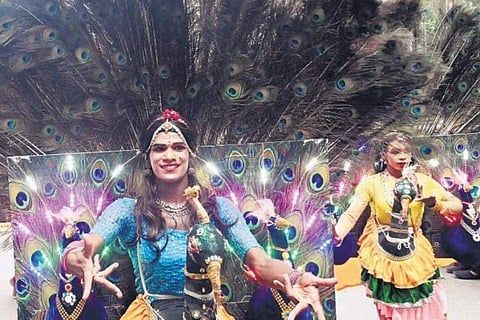
- LIFESTYLE
- FASHION
- FOOD
- ENTERTAINMENT
- EVENTS
- CULTURE
- VIDEOS
- WEB STORIES
- GALLERIES
- GADGETS
- CAR & BIKE
- SOCIETY
- TRAVEL
- NORTH EAST
- INDULGE CONNECT

Organised by the state tourism department, the week-long Onam Varaghosham is a spectacular melange of classical, folk, and ethnic art forms held every year in Thiruvananthapuram. This year, too, the celebrations based on the theme ‘Onam – the symphony of harmony’ held across 30 venues was a grand affair.
Events concluded last weekend with a fantastic procession featuring floats and the diverse artistic heritage of Kerala. Over 3,000 artists participated in the pageantry as 148 art forms and 64 floats enthralled thousands of people. It was a befitting comeback after the pandemic lull.
“The Varaghosham programme is one such annual event where tourists and people from other parts of the state gather in the capital city,” notes tourism official Abhilash. “Therefore, for the artists, it is a prestigious platform to showcase their art form to a large crowd.”
This year, however, some folk artists were left disillusioned. Some art forms were, apparently, dropped from the list. Compared with last year’s event list, the folk art forms that were missing included:
Mudiyettu: a traditional ritualistic artform based on the battle between the Goddess Bhadrakali and the demon Darika Thottam Pattu, the ballad sung before Theyyam ritual Kurathi Nritham, which narrates the story of Kuravan and Kurathi (Lord Siva and Parvathi in disguise).
Nokkuvidya Pavakali, a form of puppetry in which the artist sits on a mat balancing the puppet at the end of a nearly 2ft-long stick placed on the artist’s philtrum Arjuna Nritham, a dying art that was once a prominent practice in the Bhagvathy temples of south Kerala Velkali, a ritualistic martial art form performed by men in some of the temples of south Kerala, Alamikali, an art form performed by ‘Tipu’s army’ to commemorate the Karbala war.
“Only 30 folk art forms were shortlisted this year,” says 62-year-old Nadesan Palamoottil who has been striving to revive Arjuna Nritham through a ‘kalalayam’ in Kurichy. “We have been part of the Varagosham programme since its inception. It was disheartening that we were excluded. We had sent an application months ago and were waiting for the event with a lot of excitement.”
An unexpected exclusion was Mudiyettu. Notably, in 2010, Mudiyettu became the second art form from Kerala to enter Unesco’s Representative List of the Intangible Cultural Heritage of Humanity. Pazhoor Bindu, who plays Kali, is one of the few women to perform Mudiyettu.”We had been part of the event for three years,” she says.
Also read: Artist Santosh Jain’s solo show Her, Here probes life beneath the surface of womanhood